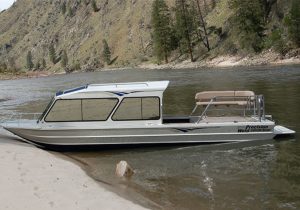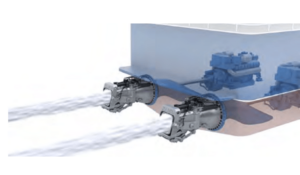 Let’s get this out of the way early: jet boats are awesome. They can go faster than most boats, with speeds that will make your heart race–in a good way, of course. This is one of the many reasons why recreational boating enthusiasts are considering buying jet boats instead of their more “mellow” counterparts. But how does a jet boat work, exactly? What kind of machinery and science allows it to be like it is?
Let’s get this out of the way early: jet boats are awesome. They can go faster than most boats, with speeds that will make your heart race–in a good way, of course. This is one of the many reasons why recreational boating enthusiasts are considering buying jet boats instead of their more “mellow” counterparts. But how does a jet boat work, exactly? What kind of machinery and science allows it to be like it is?
In this article, we explore what makes a jet boat tick, and why you should consider it for your next watercraft purchase.
The Basics Of A Jet Boat
So how does a jet boat work? In this kind of vessel, there is something called a jet unit. It allows any watercraft to travel across shallow water using thrust from waterjet propulsion. A waterjet creates thrust by forcing or sucking in water into the jet unit and forcing it out at very high speeds. That’s basically the simple science behind it.
You would notice that this is very different from a normal motor boat, which uses a propeller attached to the rear. As such, this type of boat requires deeper water for safer operation. This is why you can never really use a typical motor boat in shallower water, because the propeller is always at risk of getting entangled in something. The jet boat, on the other hand, is more streamlined with very few components sticking out, making it perfect for shallower waters.
But how does the boat stay in place and not bolt as soon as the engine is turned on? The answer is also quite simple. When you turn on the engine, it doesn’t produce much thrust through directional nozzles at the rear. But when you push forward the throttle levers, the amount of jet thrust increases and is outputted without any obstructions, making the vessel accelerate like crazy.
The nozzles also provide steering, as well as almost-instantaneous response from port to starboard. This gives jet boats insane agility; which allows a very skilled skipper to almost make the boat “dance” and weave in and out of lanes like a sports car. Think about your own boat for a moment. This is due to a jet boat’s minimal requirements to do a hard turn: less than one revolution or roughly 270 degrees. On a propeller boat, you’d need to turn the wheel at an average of 21 ½ revolutions. That is incredible if you think about it. This is also one reason why people who are used to steering motor boats must be trained to not oversteer a jet boat, or they would risk capsizing it.
Related: Marine Glass: Quick Shopping Guide
 Advantages Of Water Jet Propulsion
Advantages Of Water Jet Propulsion
Water jet propulsion has notable advantages that make it very attractive as a propulsion system. For instance, if you’re choosing a small boat, you should know that speed is critical. Leave the slowness for ships! This is what water jet-powered boats are able to give you. On a normal day, they can reach speeds of up to 40 knots (75 kmph) even in poor water conditions. So if you’re buying a boat with top speed and maneuverability in mind, choose water jet propulsion. You’ll never go wrong with it.
Should You Get A Jet Boat?
The bottom line is this. For a lot of people, a jet boat will be a great option for both their needs and wants. For others, not really. This is because jet boats occupy a very specific niche. For typical recreational boating, a propeller-driven boat is more often than not enough. So take all of these into consideration, then spend time trying out different boats before making your decision.
Related: Basic Boat Maintenance Tips Every Owner Should Know
